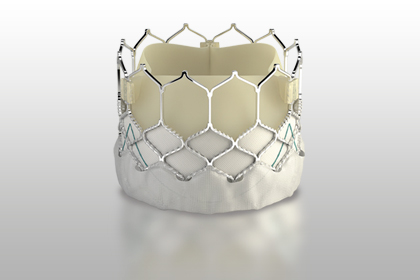Conventional implantation of balloon expandable SAPIEN-3 results in a final 70:30 or 80:20 ratio of the valve in the aorta/left ventricular outflow tract.

This comes with permanent pacemaker implantation rates of approximately 10%. Higher deployment might translate into lower rates of conduction abnormalities and pacemaker implantation.
The study compared a cohort of 1028 consecutive patients; 406 of these patients (39.5) received high deployment vs. conventional deployment.
Mean implantation depth under the noncoronary cusp was significantly smaller with high deployment vs conventional technique (1.5±1.6 versus 3.2±1.9 mm; P<0.001).
Implantation was 100% successful with both techniques. There were no cases of conversion to open heart surgery, second valve implantation within the first transcatheter aortic valve replacement, or coronary occlusion. Only one patient (0.2%) presented embolization with high deployment.
The need for pacemaker implantation 30 days after procedure was significantly lower high deployment (5.5% vs 13.1%; p<0.001), as were rates of complete heart block (3.5% versus 11.2%; P<0.001) and new onset left bundle branch block (5.3% versus 12.2%; P<0.001).
Read also: Should Total Occlusion Influence on Revascularization Strategy?
There were no differences in mild leak (16.5% vs 15.9%; p=0.804) or moderate to severe leak (1% vs 2.7%; p=0.081) at one-year followup.
Doppler velocity index was similar in both groups, but the high deployment technique showed slightly higher 1-year mean gradients and peak gradients.
Conclusion
High deployment of self-expandable SAPIEN-3 valves significantly reduces conduction abnormalities and pacemaker implantation rates without compromising safety.
Original Title: Systematic Approach to High Implantation of SAPIEN-3 Valve Achieves a Lower Rate of Conduction Abnormalities Including Pacemaker Implantation.
Reference: Yasser Sammour et al. Circ Cardiovasc Interv. 2021 Jan;14(1):e009407. DOI: 10.1161/CIRCINTERVENTIONS.120.009407.
Subscribe to our weekly newsletter
Get the latest scientific articles on interventional cardiology





